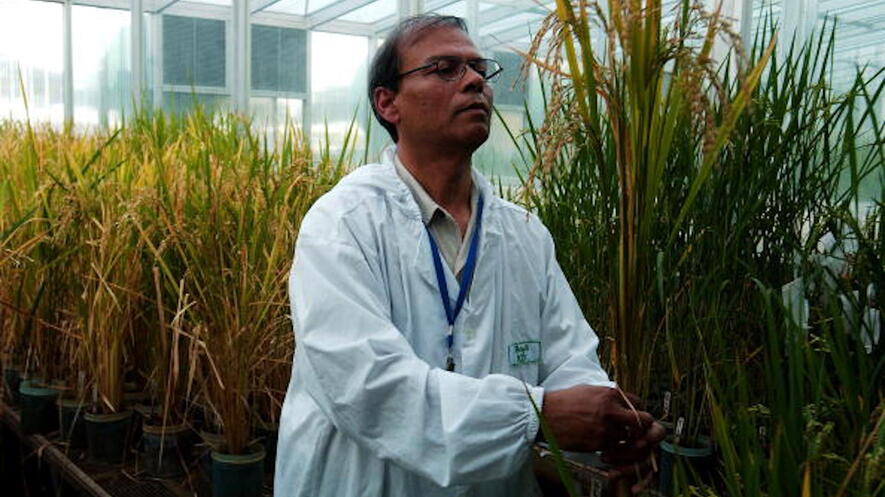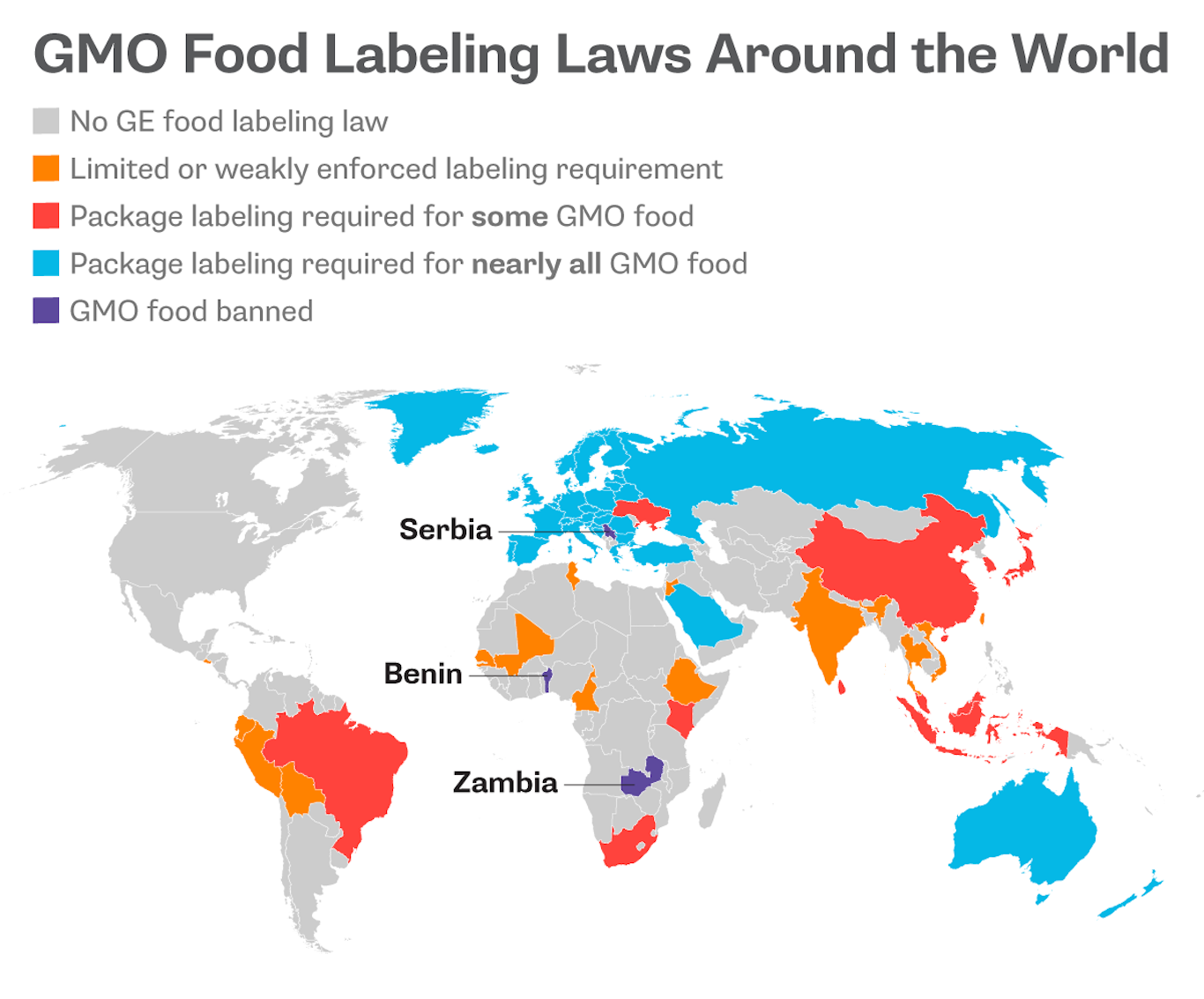Issue Overview: GMOs and engineered food
Grade Level 7
09/06/2016
Word Count 619


GMOs, which stands for genetically modified organisms, are plants or animals that have had their genes altered with DNA from different species to get certain traits. They make farmers more productive and reduce the need for chemicals to control bugs, for example.
About 90 percent of corn, soybeans and cotton grown in the U.S. is engineered. GMOs are ingredients in 70 to 80 percent of America’s processed foods.
Scientists broadly agree that GMO foods pose no more risk to health and the environment than ingredients developed through older breeding methods. Yet only 28 countries plant genetically engineered crops and a global battle rages over their future. The latest debate: labeling.
The Situation
In late July, President Barack Obama signed a law requiring engineered ingredients to be reported on food packages. The rule overrides state laws, like the one that took effect in Vermont on July 1. It allows food manufacturers to reveal the presence of GMOs in writing on their packages, or print a code that provides that information. To be read, the code must be scanned with a smartphone. Critics have said this is unfair to the elderly and poor, who are less likely to have such a phone.
More than 60 countries have labeling laws, including Japan, Brazil, China and the entire European Union. The biggest developers of GMOs also sell most of the world's commercial seeds. They are led by Monsanto, which controls 27 percent of the market. Dow Chemical and DuPont together have 23 percent of the seed market, while Syngenta has 8 percent.

The Background
Humans have been manipulating crop genetics for thousands of years, crossing and selecting plants that exhibit desirable traits. In the last century, breeders exposed crops to radiation and chemicals that caused them to mutate. A mutation is a change in a crop's genes that may be passed down to later generations. Mutations can give fruits and vegetables new colors and make crops disease resistant. Most grains, vegetables and fruits are descendants of mutant varieties.
In the early 1980s, scientists discovered how to insert genes from other species into plants, which led to the 1994 commercialization of the first GMO, the FlavrSavr tomato. It was weak tasting and was pulled from the market.
In November, the first GMO meat was approved for sale in the United States. AquaBounty Technologies’ salmon was engineered to grow twice as fast as normal salmon, with less feed. It awaits GMO labeling guidelines before it can be imported into the U.S.

The Argument
Supporters of GMOs point to a scientific agreement that GMOs pose no more risk than other crops. This is reflected in reports and statements from the National Academy of Sciences and other groups. Likewise, it's clear that GMOs have cut insecticide use, reduced soil erosion and made farmers more efficient. They've even saved Hawaiian papayas.
Some weeds and plants targeted by engineered crops are now genetically adapting themselves. Monsanto's bug-killing corn is so widely used that the corn rootworm is developing a resistance. As a result, it now requires more pesticides.
Consumers remain cautious not only of GMOs themselves, but also of their central place in industrial agriculture. Anti-corporate ideology plays a role, with Monsanto emerging as a bogeyman in popular culture.
The food industry is divided. The Grocery Manufacturers Association and supporters have campaigned to defeat labeling proposals in California and Washington. The organic, or pesticide-free, food industry is a major supporter of labeling efforts, anticipating more growth from shoppers frightened by GMOs.